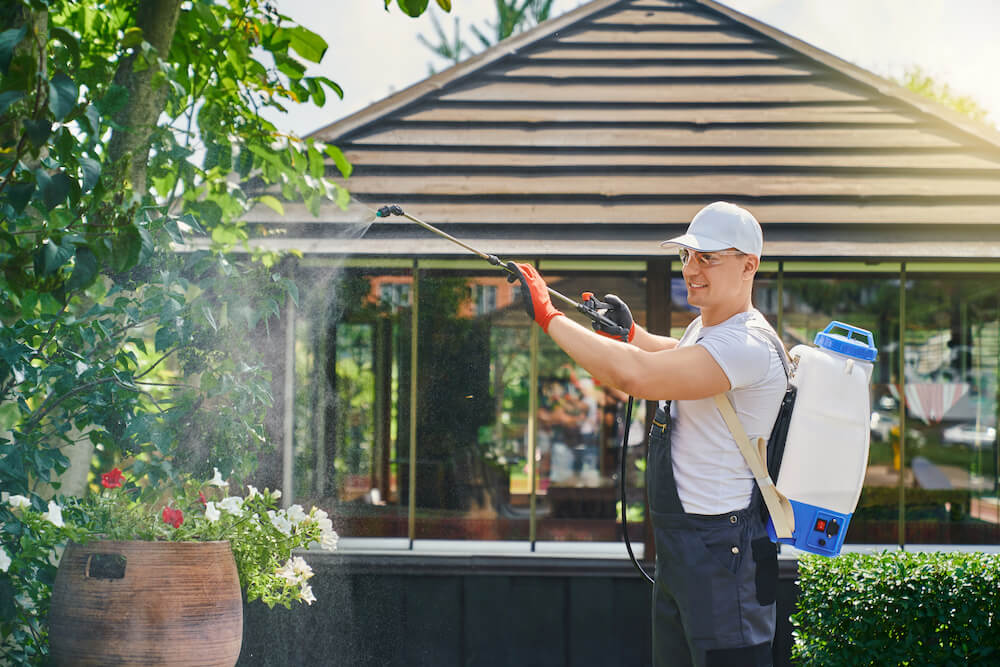Keeping your home pest-free is essential for maintaining its structure and ensuring a healthy living environment. Implementing effective pest control tips, such as sealing entry points and maintaining cleanliness, can help prevent infestations before they start.

As a new homeowner, adopting a proactive pest control strategy is essential to protect your investment and ensure a safe living environment. Below, we’ve outlined the most effective pest control tips to help you maintain a pest-free home.
1. Conduct a Thorough Inspection of Your Home
Before moving into your new home, inspect all areas for signs of pest activity. Pay attention to:
- Basements, attics, and crawl spaces, as they are common hiding spots for pests.
- Cracks in walls and foundations where pests like ants and cockroaches can enter.
- Windows and doors, ensuring seals and screens are intact.
- Pipes and wiring entry points, which can serve as entryways for rodents.
Look for droppings, chewed materials, or damaged wood that could indicate pests like termites or rodents. If you spot these signs, call a licensed pest control professional immediately.

2. Seal Entry Points for pest control
Pests often enter homes through gaps and cracks. To minimize this risk:
- Seal cracks in walls, floors, and foundations with caulk or expandable foam.
- Install door sweeps on exterior doors to close gaps.
- Use weather stripping around windows to prevent tiny insects like ants and flies from entering.
- Cover vents and chimneys with mesh screens to block access for larger pests like birds or squirrels.
Taking these measures will reduce the likelihood of pests finding their way into your home.
3. Maintain a Clean and Clutter-Free Environment
Pests thrive in cluttered, unclean spaces. Keeping your home tidy is one of the simplest and most effective pest control methods. Follow these practices:
- Regularly vacuum carpets, rugs, and upholstered furniture to remove crumbs and hidden pests.
- Store food in airtight containers, and never leave dirty dishes in the sink overnight.
- Dispose of garbage daily in tightly sealed bins.
- Declutter storage areas like basements and garages to remove hiding spots for pests.
Remember, a clean home is less appealing to pests looking for food and shelter.
4. Monitor Moisture Levels
Excess moisture attracts pests like cockroaches, silverfish, and termites. To keep pests at bay:
- Fix leaky pipes, faucets, and gutters promptly.
- Use a dehumidifier in damp areas like basements.
- Ensure proper drainage around your home to prevent standing water.
- Check for roof leaks and repair them immediately.
Maintaining low moisture levels is critical to preventing pest infestations.
5. Manage Your Landscaping
Your yard can be a breeding ground for pests that eventually invade your home. Keep your landscaping pest-free by:
- Trimming trees and bushes so they don’t touch your home’s exterior.
- Clearing debris such as leaves and branches where pests can nest.
- Avoiding woodpiles or mulch directly against your home’s foundation, as these attract termites.
- Installing a gravel or stone barrier around your home to deter pests.
Well-maintained landscaping can act as your first line of defense against outdoor pests.
6. Store Firewood and Other Materials Properly
Firewood, cardboard boxes, and other stored materials can harbor pests if not handled correctly. Follow these precautions:
- Store firewood at least 20 feet away from your home and off the ground.
- Avoid keeping cardboard boxes in garages or basements; use plastic storage bins instead.
- Inspect materials like wood and furniture for pests before bringing them indoors.
Proper storage minimizes the risk of pests gaining entry through infested items.
7. Educate Yourself on Common Pests
As a homeowner, it’s essential to recognize the pests most likely to invade your property. Common pests include:
- Ants: Attracted to sugary and greasy foods.
- Cockroaches: Thrive in dark, moist areas and spread diseases.
- Termites: Cause structural damage by feeding on wood.
- Rodents: Gnaw through wires, contaminate food, and carry diseases.
Learn the warning signs and habits of these pests so you can take quick action if they appear.
8. Set Up Regular Inspections with a Pest Control Professional
DIY pest control is useful, but a professional’s expertise ensures thorough protection. Schedule regular inspections with licensed pest control experts to:
- Detect infestations early before they become severe.
- Identify specific pest threats based on your location and home environment.
- Receive tailored treatment plans to eliminate and prevent pests.
Professional pest control services provide peace of mind, especially for new homeowners.

9. Use Natural Remedies and Non-Toxic Methods
If you prefer chemical-free solutions, try these natural pest repellents:
- Essential oils: Peppermint, eucalyptus, and citronella oils can deter ants, spiders, and mosquitoes.
- Diatomaceous earth: A natural powder that eliminates crawling pests like bed bugs and cockroaches.
- Vinegar and water sprays: Useful for repelling ants and cleaning pest trails.
These eco-friendly methods can supplement other pest control measures in your home.
10. Stay Proactive Year-Round
Pest control is not a one-time task; it requires ongoing attention. Adjust your strategies seasonally:
- In spring and summer, focus on preventing outdoor pests like mosquitoes and ants.
- In fall and winter, seal your home against rodents and other indoor invaders.
Consistent monitoring and preventive steps will keep your home pest-free throughout the year.
Taking the time to implement these pest control tips will not only protect your home but also save you money and stress in the long run. Being proactive, maintaining cleanliness, and working with professionals are key to keeping pests at bay.

